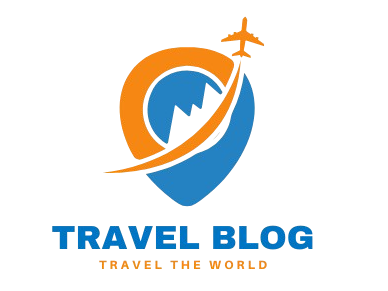Travel Fee Settlement : Guide in 2025
In today’s fast-paced business world, managing travel costs is key. The process of settling travel fees is crucial. It helps keep your travel budget in check, ensures you follow the rules, and makes sure you get reimbursed right.
This guide will cover the basics of travel fee settlement. You’ll learn how to manage travel costs effectively. It’s all about making your travel budget work for you.
Table of Contents
Understanding Travel Fee Settlement Fundamentals
For businesses, understanding travel fee settlement is key to keeping finances in check. It involves basic parts, important people, and needed documents. Knowing these basics helps your company manage travel expenses well and follow travel rules.
Basic Components of Travel Settlement
The travel fee settlement process has several key parts, including:
- Tracking and reconciling employee travel expenses
- Verifying compliance with established corporate travel policies
- Processing reimbursements and supplier payments
- Maintaining detailed records for audit and reporting purposes
Key Stakeholders in the Settlement Process
Effective travel fee settlement needs teamwork from different groups in your company, such as:
- Employees who incur travel-related expenses
- Finance and accounting teams responsible for expense processing
- Travel managers who oversee policy implementation and compliance
- Procurement or sourcing professionals who negotiate supplier contracts
Documentation Requirements
For the travel fee settlement process, you need all the right documents. These include:
- Detailed expense reports with supporting receipts
- Travel authorization forms and pre-approval records
- Supplier invoices and payment records
- Audit trails and reconciliation reports
By grasping these basic points, your company can make the travel expense reconciliation smoother. And it will keep strong travel policy compliance.
Corporate Travel Expense Policies and Guidelines
Creating good corporate travel expense policies is key to managing business trip costs and making sure everyone follows the rules. These rules help employees know what they can spend, how to get reimbursed, and other key things.
A clear travel policy can really help with corporate travel expenses. It sets clear rules for spending and reporting expenses. This helps employees make smart choices, cut down on unnecessary costs, and make the expense reporting easier.
Key Elements of Effective Travel Expense Policies
- Clearly defined expense categories and spending limits
- Reimbursement procedures and documentation requirements
- Policies for air travel, accommodations, meals, and ground transportation
- Guidelines for booking travel through approved channels
- Policies for handling travel disruptions and emergencies
- Processes for policy review and updates
Strategies for Ensuring Travel Policy Compliance
- Communicate the policy effectively to all employees
- Provide training and resources to help employees understand and follow the guidelines
- Implement a robust expense reporting system with built-in compliance checks
- Regularly monitor expense reports and address non-compliant behavior
- Continuously review and update the policy to address changing business needs
By aligning your corporate travel expenses with clear policies and guidelines, you can make business trip costs better and keep everyone following the rules.
| Policy Element | Description |
|---|---|
| Air Travel | Specify guidelines for class of travel, baggage fees, and airline preferences |
| Accommodations | Set limits on hotel room rates, additional expenses, and booking policies |
| Ground Transportation | Outline policies for rental cars, taxis, rideshares, and public transportation |
| Meals and Incidentals | Establish per diem rates and guidelines for business-related meals and expenses |
The Travel Fee Settlement Process Explained
Understanding travel fee settlement can seem tough. But knowing the main steps makes it easier. We’ll look at the three main parts: getting approval before you go, tracking expenses while you’re away, and settling costs after you return.
Pre-trip Authorization Steps
Getting approval before a trip is key. You need to fill out a travel voucher or request form. It should list the costs and reasons for the trip. This step checks if the trip fits your company’s travel expense reconciliation rules, helping with budgeting and following rules.
During-trip Expense Tracking
Tracking expenses while you’re away is crucial for smooth travel fee settlement. You should keep detailed records of all allowed costs, like travel, lodging, and food. Also, keep receipts and documents. Using digital tools can make tracking easier, allowing for quick updates and easier travel voucher processing.
Post-trip Settlement Procedures
After the trip, it’s time to settle the travel fee settlement. You need to submit your travel voucher with all needed documents. Make sure the expenses match your company’s rules. Then, the finance team will check and pay you back quickly.
Knowing these steps helps you manage trips better. It keeps you in line with rules and makes sure you get paid right.
Digital Tools for Travel Expense Management
In today’s digital world, managing travel expenses is easier than ever. Companies use software and apps to make expense reconciliation simpler, automate travel voucher processing, and track corporate travel expenses in real-time. These tools are changing how businesses handle employee trips and reimbursements.
Digital expense management tools let employees capture receipts and log expenses on their phones. This means no more paper receipts or manual entry. It saves time and reduces the chance of lost documents.
Many platforms also offer features like automatic expense categorization and policy checks. They work well with accounting systems, making travel voucher processing smoother. This ensures accurate payments and follows company travel rules.
These tools do more than track expenses. They provide insights into corporate travel expenses. Finance teams can see spending patterns, find ways to save, and improve travel programs.

Using these digital solutions can improve expense reconciliation and make employees happier. It also helps companies understand their travel costs better. As travel needs change, using the right digital tools is key to staying ahead and saving on travel costs.
Airline Reimbursement Procedures and Timelines
Dealing with airline reimbursements can be tough for corporate travel managers. Knowing what documents you need, how long it takes, and why claims get rejected helps. This makes the airline reimbursement process smoother. It ensures your company gets the refunds it deserves for corporate travel refunds.
Required Documentation for Airline Claims
To submit an airline reimbursement claim, you need certain documents:
- Detailed travel itinerary
- Original receipts for all airline-related expenses
- Proof of cancellation or change, such as airline confirmation emails
- Justification for the refund request, if applicable
Processing Timeframes
The time it takes to process airfare refund management claims varies. It depends on the airline and the complexity of the request. Here’s what you can generally expect:
- Straightforward refund requests: 2-4 weeks
- Cancellations or changes due to airline-initiated schedule modifications: 4-8 weeks
- Complicated or disputed claims: 8-12 weeks or longer
Common Rejection Reasons
Airline reimbursement claims can be rejected for several reasons:
- Incomplete or missing documentation
- Booking made outside the corporate travel policy
- Failure to meet the airline’s refund eligibility criteria
- Unreasonable delay in submitting the claim
Understanding these airline reimbursement procedures and timelines helps. Corporate travel managers can then better manage airfare refund management. This ensures their organization gets the corporate travel refunds it needs.
Business Trip Cost Optimization Strategies
Planning a business trip can be expensive for any company. But, with the right strategies, you can cut down on costs. This way, you can keep your travel expenses in check without hurting quality or employee happiness.
Leverage Loyalty Programs
Joining airline, hotel, and car rental loyalty programs can save you money. These programs offer points and status levels for free upgrades and discounts. Make sure your employees use these programs to get the most out of your business trip costs.
Negotiate with Vendors
Good relationships with travel vendors can help you get better deals. Look over your corporate travel expenses often and try to renegotiate contracts. Show your loyalty and future business potential to get the best deals.
Enforce Travel Policy Compliance
A clear travel policy is key to keeping costs down. Make sure your employees know and follow the rules. This includes booking, travel class, and expense reporting. Regular checks and enforcement of the policy help control costs.
| Strategy | Potential Cost Savings | Implementation Considerations |
|---|---|---|
| Leverage Loyalty Programs | 10-15% on average | Encourage employee enrollment and utilization |
| Negotiate with Vendors | 5-20% depending on volume and relationship | Dedicate time and effort to build strong vendor partnerships |
| Enforce Travel Policy Compliance | Variable, but can be significant | Establish clear guidelines and implement monitoring processes |
Using these strategies can help you manage your business trip costs better. This ensures your corporate travel expenses are in check while keeping travel policy compliance. A proactive and data-driven approach to managing travel expenses can save your company a lot of money.
Travel Policy Compliance and Best Practices
Keeping up with travel policy is key for managing company travel costs. As a business traveler, knowing your company’s travel policy is important. Following it helps your company save money and makes getting reimbursed easier.
Compliance Monitoring Methods
Keeping an eye on compliance is vital for a good travel program. Companies use several ways to check if people are following the rules, such as:
- Automated expense reporting tools that flag policy violations
- Periodic audits of travel expense reports
- Analyzing travel booking data to identify noncompliant behavior
- Surveying employees on their travel policy awareness and adherence
Policy Enforcement Guidelines
To keep everyone following the rules, companies have rules, like:
- Requiring pre-trip approval for expenses that exceed policy limits
- Denying reimbursement for noncompliant expenses
- Implementing disciplinary actions for repeated policy violations
- Providing regular training and communication on travel policy updates
By focusing on travel policy compliance, businesses can better manage corporate travel expenses and make expense reconciliation smoother. This helps the company succeed overall.
| Compliance Monitoring Method | Description |
|---|---|
| Automated Expense Reporting | Tools that flag policy violations in expense reports |
| Periodic Expense Audits | Regular review of employee travel expense reports |
| Travel Booking Data Analysis | Identifying noncompliant booking behavior patterns |
| Employee Surveys | Assessing travel policy awareness and adherence |
“Maintaining travel policy compliance is essential for managing corporate travel expenses and facilitating smooth expense reconciliation.”
Expense Reconciliation Methods and Tips
Getting expenses right is key for corporate travel. Using smart methods and tips helps companies manage travel costs well. This ensures everyone gets paid right and keeps costs clear.
Setting up a central place for receipts is a good start. Digital tools can help organize and track these. This makes it easier to match expenses with their receipts.
It’s also smart to get expenses in on time. This keeps records up to date and speeds up payments. Happy employees and fewer lost receipts are the result.
- Implement a centralized receipt management system to streamline the reconciliation process.
- Encourage travelers to submit their expenses in a timely manner to maintain accurate records and expedite reimbursements.
- Regularly review and reconcile travel expenses to identify any discrepancies or anomalies, enabling proactive cost management.
- Leverage data analytics to identify patterns and trends in travel-related expenses, informing policy updates and cost optimization strategies.
Using these tips, companies can make their travel expense process better. This means accurate payments and better travel expense management.
| Reconciliation Method | Key Benefit |
|---|---|
| Centralized Receipt Management | Streamlined documentation and faster processing |
| Timely Expense Submission | Improved accuracy and reduced reimbursement delays |
| Proactive Reconciliation Reviews | Identification of discrepancies and cost optimization opportunities |
| Data-Driven Analytics | Informed policy updates and strategic decision-making |
By using these expense reconciliation methods and tips, companies can make their travel fee settlement process better. This ensures accurate payments and improves their corporate travel expenses management.

“Effective expense reconciliation is the foundation for maintaining a transparent and well-managed corporate travel program.”
Managing Corporate Travel Refunds
Dealing with corporate travel refunds can be tough and time-consuming. But, with the right strategies, you can make it easier. It’s all about keeping track of everything, knowing the rules for airfare refunds, and fitting refund management into your travel plans.
Setting up a system to track all refund requests is key. You might use special software or detailed spreadsheets. This way, you can keep everything organized and boost your chances of getting refunds back.
Understanding airfare refund rules is also vital. Knowing what airlines need and when can help a lot. Plus, keeping an eye on policy changes can help you avoid problems.







